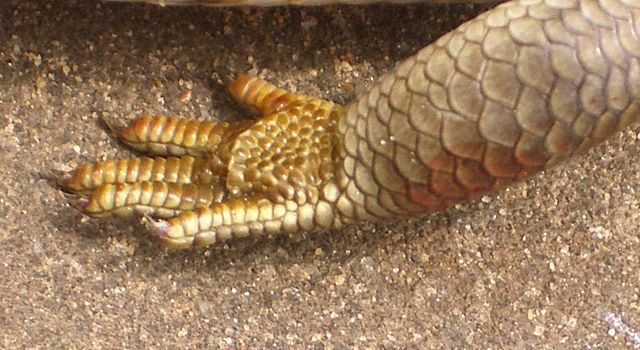The Lepidosauria is a subclass or superorder of reptiles, containing the orders Squamata and Rhynchocephalia. Squamata includes lizards and snakes. Squamata contains over 9,000 species, making it by far the most species-rich and diverse order of non-avian reptiles in the present day. Rhynchocephalia was a formerly widespread and diverse group of reptiles in the Mesozoic Era. However, it is represented by only one living species: the tuatara, a superficially lizard-like reptile native to New Zealand.
Lepidosauria
The quadrate bone is particularly elongated in snakes, to facilitate cranial kinesis
The foot of a skink, showing lepidosaurs' characteristic overlapping scales
Python (top) and rattlesnake (bottom) featuring pit organs for infrared sensing. Red arrows indicating pit organs and black arrows pointing to the nostrils
Reptiles, as commonly defined, are a group of tetrapods with an ectothermic ('cold-blooded') metabolism and amniotic development. Living reptiles comprise four orders: Testudines (turtles), Crocodilia (crocodilians), Squamata, and Rhynchocephalia. As of May 2023, about 12,000 living species of reptiles are listed in the Reptile Database. The study of the traditional reptile orders, customarily in combination with the study of modern amphibians, is called herpetology.
Reptile
Reptiles, from Nouveau Larousse Illustré, 1897–1904, notice the inclusion of amphibians (below the crocodiles)
"Antediluvian monster", a Mosasaurus discovered in a Maastricht limestone quarry, 1770 (contemporary engraving)
The first reptiles had an anapsid type of skull roof, as seen in the Permian genus Captorhinus








